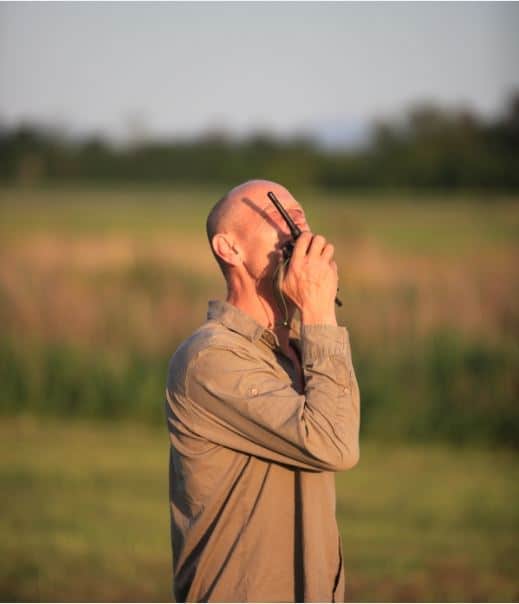“Good piloting skills is the key to optimize a flight with UAV Aube” Interview of Pierre Fritsch, instructor for Aube.
Parapentist and trainer for more than fifteen years, Pierre has recently become a new Aube trainer to the great pleasure of the company. Through this article, he gives us his impressions on the Aube UAV but also on the fundamental aspect of training for an aircraft of this type.
Can you explain how the Aube paramotor UAV is a tool that requires extensive training?
Even if the Aube UAV is easy to fly, it is still a high-tech aircraft with a propeller and gravity! It is therefore essential to be familiar with all aspects of it, to be able to operate it in complete safety, while making the best use of its many possible uses.
From your experience in paramotoring, what are the important notions to take into account for a novice taking his first steps?
A paramotor is a slow aircraft, this is both its advantage because it allows excellent shots, but also its disadvantage because the flight domain (i.e. the maximum wind conditions, air instability and visibility in which one can safely undertake a flight) decreases when the speed decreases. But we don’t see the air circulating, so it is essential to teach operators to correctly define the flight domain corresponding to their UAV, the aerological conditions and the level of the telepilot.
But a paramotor is also an aircraft equipped with a flexible sail : a paraglider-parachute that allows it to glide and land, even with the engine off, on a minimalist surface while having the enormous advantage of a quick implementation and easy storage in a small backpack. Understanding the aerodynamic forces that come into play on a soft glider is essential to learn how to manage the aircraft in all situations, including poor weather analysis or an error in estimating the autonomy of the powertrain.
The Aube paramotor UAV is a high-tech craft equipped with a propeller that represents a definite danger but from which all risks can be excluded, thanks to training, by following procedures that are simple to acquire, even before the first use. Mastering all aspects of safety allows the operator to carry out his mission serenely.

How are theoretical and practical training sessions conducted at Aube?
The training alternates practical courses with theoretical courses depending on the weather and the rate of progression of the trainees.
Theoretical modules cover aerology, meteorology, aerodynamics, aviation regulations, human factors, aspects concerning equipment and accessories, their operation up to maintenance and repair.
The practical courses on site, after explanation and demonstration, allow each trainee to be initiated then to master all the phases of flight such as the analysis of the site, the procedure of implementation, the safety rules, the takeoff, the basic piloting, the exploitation of the accessories and the landing with or without engine.
According to your standards, how would you define successful training?
Successful training is that which gives autonomy to the student and transforms him/her into a responsible remote pilot capable of apprehending each phase of the flight while remaining aware of his/her limits and those of the equipment in a given environment.
You recently joined the Aube team to get involved in a new adventure, why is this project so close to your heart?
I have trained nearly 500 paramotor pilots in almost 20 years and I love my job.
I met Julien Lerch, founder of Ihmati and creator of the Aube drone on my paramotor school grounds. I immediately understood that the ease of transport, easy operation, stealth and autonomy make the paramotor an excellent observation UAV, with little impact on the environment. Julien’s personality and ethics definitely persuaded me to join the team!

All sources are protected ©IHMATI
